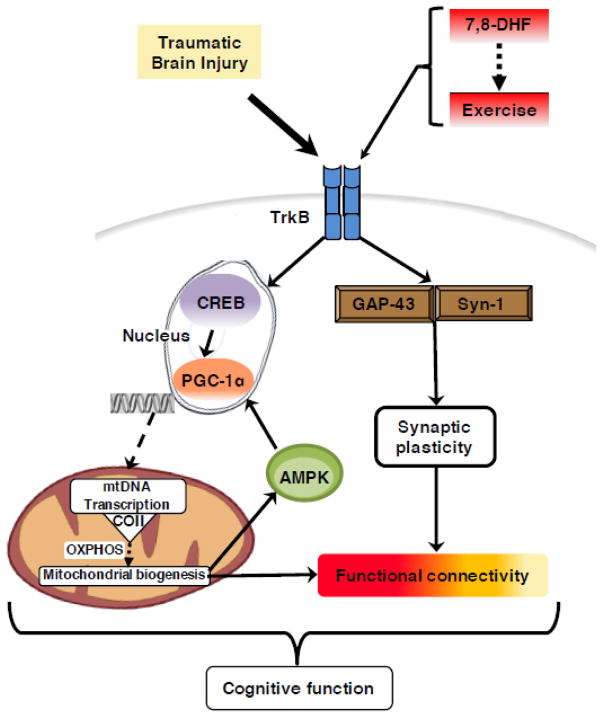Fig. 8.
Proposed mechanism for the action of 7,8-dihydroxyflavone (7,8-DHF) on enhancing the outcome of exercise post-TBI. The flavone derivative 7,8-DHF acts on the BDNF receptor TrkB to increase levels of GAP-43 and Syn I. TrkB phosphorylation upregulates molecular systems involved in cellular energy and metabolic pathways such as PGC-1α and COII -- key component involved in the final step of oxidative metabolism thereby controlling ATP production. The activation of transcriptional machinery can increase mitochondrial function by involving the energy sensor, AMPK. Intervention with 7,8-DHF and exercise increased hippocampal functional connectivity following TBI. The fact that 7,8-DHF affects the BDNF-TrkB pathway is critical for regulation of synaptic plasticity and energy metabolism. The effects of 7,8-DHF and exercise were significant to influence functional connectivity, which provides a reading of functionality of neural circuits. Collectively, the mechanism illustrated can provide basis for using 7,8-DHF to support physical rehabilitation to accelerate functional recovery and heightening cognitive ability after TBI.

